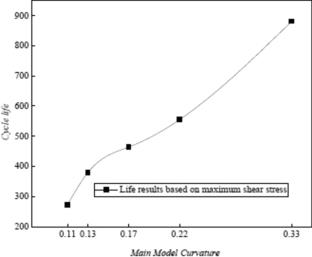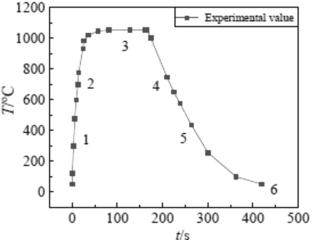Study on the Influence of Macroscopic Curvature on the Interface Strength and Life for Thermal Barrier Coatings
Abstract
Thermal barrier coatings (TBCs) represent an effective technical approach for augmenting the high-temperature resistance of turbine blades. The microscopic interfacial characteristics of TBCs are directly influenced by the macroscopic structural configuration and mechanical loading conditions of turbine blades. Elucidating the correlation between macroscopic curvature and interfacial strength evolution in TBCs substantially improves the predictive accuracy of thermal fatigue life estimation. In this work, a stress-driven predictive model for TBCs thermal fatigue life is established through combining phenomenological and S-N curve methods with an oxide layer growth model. The master–slave method is implemented to analyze the influence of macroscopic curvature on the interface stress of TBCs. It is demonstrated that both equivalent stress and maximum shear stress at the interface are found to increase as the curvature of TC-layer decreases, whereas maximum principal stress exhibits limited sensitivity to macroscopic curvature variations. The comparison between predictive outcomes and experimental measurements is revealed to exhibit a 32.89% deviation in thermal fatigue life estimation. Moreover, a significant reduction in coating thermal fatigue life is identified with decrease in macroscopic curvature. These findings are validated through correlation with failure characteristics observed in serviced turbine blade TBCs, thereby substantiating the proposed conclusions. The developed predictive framework is established as a valuable reference for the design of high-performance turbine blade systems incorporating TBCs.



 求助内容:
求助内容: 应助结果提醒方式:
应助结果提醒方式:


